This pan-Canadian series of interviews with experts in their field provides an overview of renewable energy deployment across Canada and the measures being implemented to become carbon neutral.
Here is a discussion about renewable energy deployment in the Territories and Indigenous communities with Dr. Michael Ross, Industrial Research Chair in Northern Energy Innovation at Yukon College.
First, let’s recall the targets set by the federal and local governments for the reduction of greenhouse gas emissions.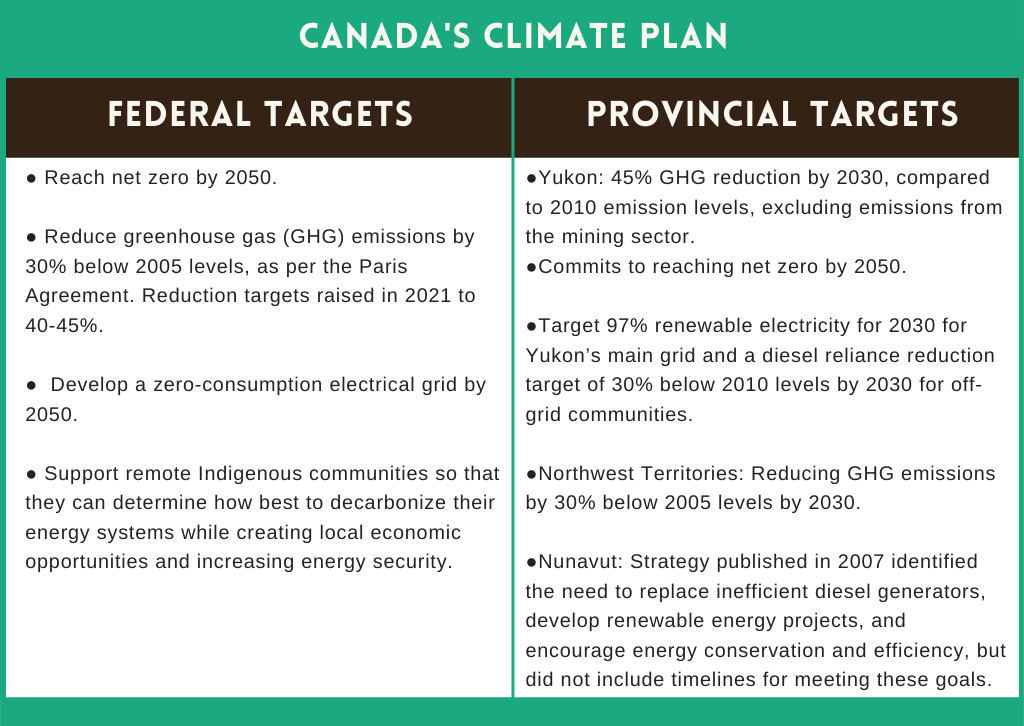
Reference : Pembina report 2021 All hands on deck
Nergica: Can you tell us a bit more about your involvement with the Yukon University and Northern Energy Innovation?
Dr. Michael Ross: I think the best way to talk about it is talking about how we’re funded – 50% from the electric power utilities in the territories and 50% from the federal government through the Natural Sciences and Engineering Research Council (NSERC). That means that the CEOs and managers of the Northern Power Utilities come together, and they determine which research areas are most relevant to the Northern energy industry, and we pursue research projects that meet those needs. Also, in the North you can’t complete a research project without partnering with communities, so we work with many communities and indigenous governments on their large-scale energy projects.
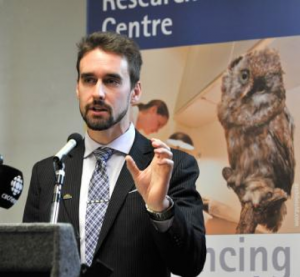
We are also concerned with the accessibility and transparency of energy data. In Canada, data are often incomplete at the provincial level. This gap means that it is difficult for industries, governments and researchers to get a comprehensive overview of the markets and to develop cost-effective solutions to accelerate the energy transition in Quebec.
What we focus mostly on is the technical side of things—i.e., electric power systems, everything to do with generation, transmission, distribution and utilization of electric energy. As we do have an industry partnership with the electric power utilities – Yukon Energy Corporation, ATCO Electric Yukon, and Northwest Territories Power Corporation – we work with their technical personnel on the technical issues they’re facing, anything that pertains to research. Every single one of our projects has a practical application. Don’t get me wrong, working on the theory is very exciting, but it is very rewarding when we work with community energy projects and we see it come to life.
As an example, with the Old Crow (Yukon) solar project, we worked on that a couple of years ago and just this past month they turned off the diesel generators. It’s something that has a tangible benefit. And because we’re funded by the federal government as well, all the work we do is meant to be openly accessible and available to everyone.
Nergica: You are based in Yukon, but you work in all three territories. Can you give us an overview of the situation as it pertains to the energy mix and the reality each of them experience?
MR : First, there is no electric power system in the Canadian territories that is connected to the North American grid, they’re all isolated systems. However, we do have what we call the Yukon Integrated System which is a high-power system. We have a lot of hydro to power load centers such as Whitehorse, but we also have five isolated diesel-powered systems that are disconnected from the Yukon Integrated System. In the wintertime, the Yukon Integrated System still needs to be complemented with diesel and Liquefied Natural Gas generators to meet our needs, and that fuel needs to be shipped up from the south.
In the Yukon, we have a capacity issue, because on isolated systems we do not have the opportunity to import or export additional power. And so, when the capacity for the hydro resources are exceeded, we do need to supplement that with fossil fuels. In the isolated communities, there are predominantly diesel-powered systems. But there are initiatives for communities to integrate renewables into their community through the Independent Power Production Policy. There is an eagerness to do better in terms of getting off of diesel within the Yukon.

In the Northwest Territories, there are two hydro grids—one north of Great Slave Lake and one south of Great Slave Lake—and there are 25 communities in their thermal zone. These communities are predominantly relying on diesel, but there are some communities that are powered by natural gas as well.
Then going to Nunavut, there are 25 communities and they’re all powered by fossil fuel with no infrastructure in between. If you think about it physically, Nunavut is twice the size of Ontario and hosts 25 communities. And even if you look at the North as a whole, there is a challenge where if the three territories were a country, they would be the seventh-largest country in the world. And its population density is less than the Sahara Desert’s, by a factor of ten.
It comes with challenges. Connecting everything, that’s a big one because there is no economy of scale in the North. And as Northerners we are dependent on fossil fuels for a lot of our transportation, our heating and our energy. Therefore, even though we want to get off fossil fuels, it’s very difficult to do so in a reliable manner—and very expensive—so we are still dependent on importing fossil fuels.
Nergica: Ensuring energy security is probably the main challenge considering the complexity of the energy production in the North. And it is a life or death concern in the short term, whereas being green has implications on a longer timeframe. What importance is given to the implementation of renewable energies in the territories?
MR: Yes exactly, we need to have a reliable resource to provide Northerners the power needed. A power outage in Montreal, for example, is a big inconvenience, but a power outage in a remote community could be critical and it could escalate very quickly. In Yukon last year, there was an avalanche on the South Klondike highway that hindered the supply of liquefied natural gas and diesel, and we were one day away from having blackouts during one of our winter storms. That is why having a reliable dependable supply of power is critical.
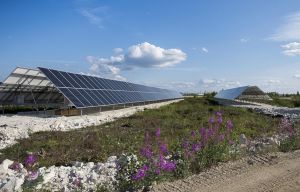
Even though diesel is a very reliable source of power, a lot of Northerners want to get off it, and governments have an initiative to get off the fossil fuel as best as they can. As an example, the Yukon government has a clean energy strategy and wants to be carbon neutral by 2050. By 2030, the government aims for our electric power system to be 97% renewable and to reduce our greenhouse gas emissions by 30%. Per capita, Northerners have a large carbon footprint, mostly due to transportation. There aren’t many fast charger capabilities for electric vehicles, or if you’re not connected to the hydro systems, you don’t really have many opportunities to get renewable electricity.
Nergica: Is extending the grid a relevant problematic and debate to have in the territories, or ensuring each community can be self-reliant and produce electricity from renewable sources is the only topic of interest considering the needs and constraints?
MR: Several organizations are actively looking into it. They’re looking at opportunities to connect to the North American grid but the costs due to the distance and the local global economies of scale make it very challenging. Yet, we would still have to keep our resources and be self-sufficient to guarantee a system security.
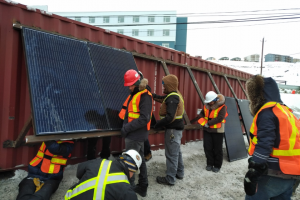
A high voltage connection with Manitoba, as well as high-speed Internet, and a road access are being investigated, in the Kivalliq region in Nunavut and for example. There might also be a possibility for Yukon to be supplied by British Columbia. The Taku River Tlingit First Nation in Atlin (British Columbia), which is only road accessible through Yukon, have a hydropower capability of about two megawatts that’s powering their community, and they have an opportunity to expand that by an additional eight megawatts. It is a community with an isolated system who doesn’t need more power, but Yukon Energy and Yukon Integrated System could use that hydropower—especially in the wintertime—as opposed to importing more fossil fuel. However, because they are powered by BC Hydro, in order for them to provide energy to Yukon, they have to have two separate generators that are electrically isolated from each other: one powering their community with BC Hydro and one powering Yukon Integrated System. Regulatory considerations are both an enabler and a challenge, and something that we have to work with when we’re developing any project.
Nergica: The territories’ contribution to Canada’s total emissions is very small. However, the impacts of climate change disproportionately affect the North. I was wondering what the general population’s perception and interest in renewables are.
MR: Northerners want to go greener; we want to have renewable options. However, it is a very big challenge in the North, and we are seeing the effects of climate change at twice the rate. We have big building infrastructure that was built on permafrost which is now starting to collapse because of the temperature increase. So the effects are very visible and relatable.
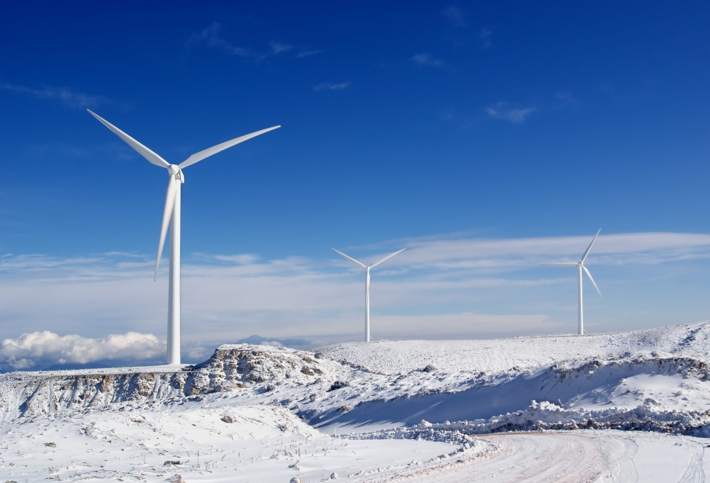
Moreover, sustainability is a key value for many First Nations. The idea of having locally sourced resources instead of being dependent on buying dirty fuel for diesel generators is inherently compelling. Fuel spills are also a threat that we would like to avoid.
Being powered by wind and solar energy does not only align well with communities’ values of sustainability, but they could lower their dependency on imported fossil fuel and develop a source of local income. As an independent power producer, that money gets circulated within the community and helps support the local economy as well, so there are many benefits for community energy projects.
Nergica: The economic benefits for remote communities transitioning from diesel generators to wind and solar production are often debated, and sometimes tricky to evaluate beforehand. It is not always a given that implementing renewables will be cheaper for the community and will create jobs which will compensate for the ones lost. How does that come into play in your projects?
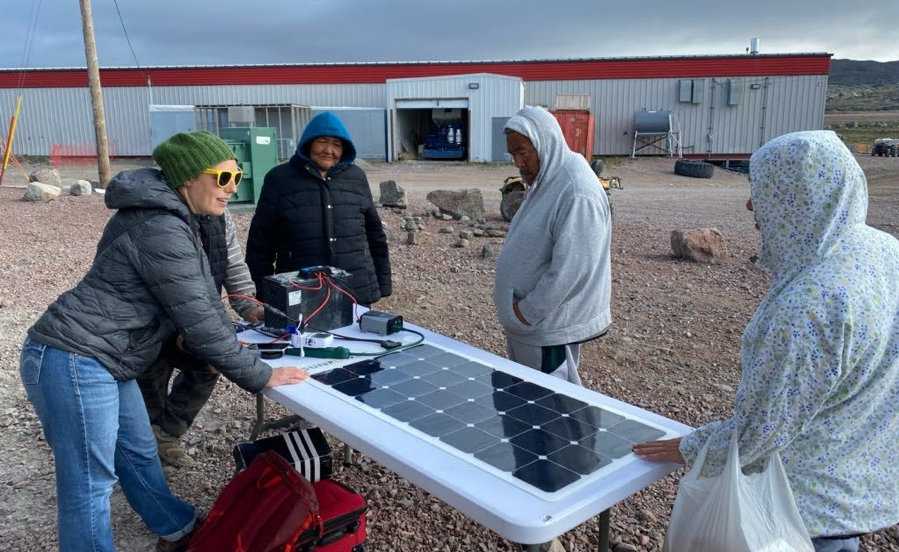
MR: You’re absolutely right, every community has different values and different economic streams. In different contexts, in different jurisdictions, it could offer different values streams both economic and personal, but not always.
An example is Inuvik in the Northwest Territories, where there is a lot of natural gas extraction and that can benefit the local economy. The ideal scenario with solar is, you put it in and there’s very little maintenance. So it doesn’t necessarily produce more jobs.
There are different reasons for different projects being implemented with different trade-offs. If there was a solution that was 100% renewable, reliable, economically feasible, and socially responsible, we would have done that already! It’s about understanding the trade-offs, which could be different for each community.
Nergica: In your opinion, what are the main challenges regarding GHG reduction and renewable implementation in the territories?
MR: With regards to utilities, their mandate is to provide safe, reliable power. And because you can’t tell the wind to blow or the sun to shine, it’s adding more uncertainty and variability. With isolated power systems, we don’t have an opportunity to import or export. Diesel generators themselves have specific operating characteristics, where there is a minimum loading constraint or efficiency is not constant throughout their entire range of operation. There are other factors to be considered in order to be able to incorporate renewables into remote power systems.
There is also the economic issue, as we don’t have the economy of scale. Investments made for a given project would serve a small number of people and it is difficult to raise capital for such small populations. It is also difficult to handle the operation and maintenance of the equipment as we can’t get to that equipment very easily or very cost effectively. We don’t want to see a graveyard of bleeding edge technology.
Nergica: Are there also technical challenges arising from the specificities of the Northern environment?
MR: The goal of energy projects is often different between the North and the South. In the South, you may want to look at maximizing the amount of energy that you produce and so the panels are installed at an angle which will lead to the greatest energy production. But in the North that might not be the case, depending on what you’re trying to do.
In the North, many solar panels are straight vertical, because you won’t have the snow buildup and you get the albedo from the sun reflecting off snow and coming in. Solar panels have been known to produce more than their rated capacity because of that, in addition to being more efficient at cooler temperatures. In the North, there are solar panels facing east-west, not even facing south. That is not necessarily maximizing renewable capacity, but in the North, the sun circles around the sky in the summertime and is never straight up overhead.
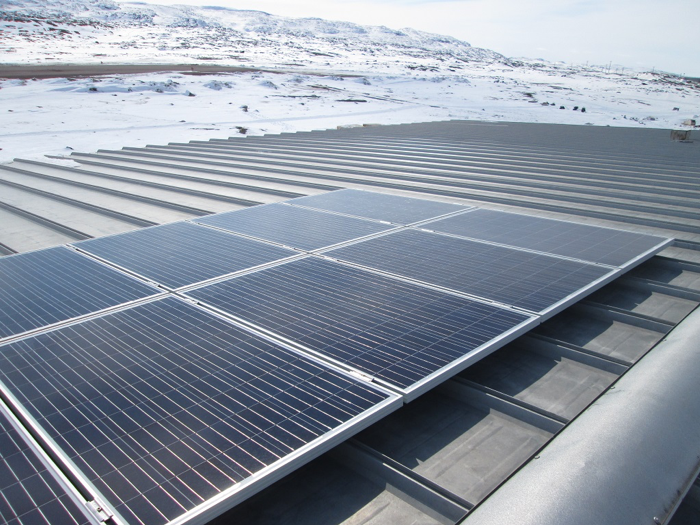
Some projects want to have solar panels that match the community demand profile as much as possible, so that smaller battery systems would be required. By facing east-west, solar panels better match the community consumption profile and requires less energy to be stored. Whereas, say for example, White River First Nation in Beaver Creek wants to maximize their renewable energy production, and so they face the solar panels to the south.
It depends on the problem you want to solve. It’s not to say that it can’t be done, but there are specific considerations in the North that must be addressed to develop for a project to be successful.
This interview was conducted as part of a series of regional portraits of renewable energy in Canada. To hear the opinions of other energy transition experts and players, join us at the Transition Solutions Symposium on October 14, 2021, a pan-Canadian event dedicated to the technological, social and political innovations needed to deploy renewable energy and accelerate the energy transition in Canada.
Other publications in this series:
Johanne Whitmore, Senior Researcher at the Energy Sector Management Chair at HEC Montreal
Brandy Giannetta, Vice-President, Policy, Regulatory and Government Affairs at CanREA
More to come soon!


